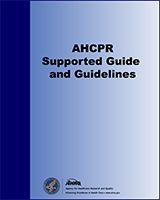NCBI Bookshelf. A service of the National Library of Medicine, National Institutes of Health.
This publication is provided for historical reference only and the information may be out of date.
Despite the high prevalence of depressive symptoms and major depressive episodes in patients of all ages, depression is underdiagnosed and undertreated, especially by primary care and other nonpsychiatric practitioners, who are, paradoxically, the providers most likely to see these patients initially. Depression may co-occur with nonpsychiatric medical disorders or with other psychiatric disorders; it may also be brought on by the use of certain medications. Major risk factors for depression include a personal or family history of depressive disorder, prior suicide attempts, female gender, lack of social supports, stressful life events, and current substance abuse. The social stigma surrounding depression is substantial and often prevents the optimal use of current knowledge and treatments. The cost of the illness in pain, suffering, disability, and death is high.
Once identified, depression can almost always be treated successfully, either with medication, psychotherapy, or a combination of both. Not all patients respond to the same treatment. A patient who fails to respond to the first treatment attempted is highly likely to respond to a different treatment.
Once major depressive disorder is diagnosed, interventions that predictably decrease symptoms and morbidity earlier than would occur naturally in the course of the illness are logically tried first. The key initial objectives of treatment, in order of priority, are (1) to reduce and ultimately to remove all signs and symptoms of the depressive syndrome, (2) to restore occupational and psychosocial function to that of the asymptomatic state, and (3) to reduce the likelihood of relapse and recurrence. Given the strong evidence that treatments are effective, third-party coverage for the diagnosis and treatment of depression should be equal to that available for other medical disorders.
Contents
- [Inside Front Cover]
- Guideline Development and Use
- Foreword
- Dedication
- Panel Members
- Acknowledgments
- Executive Summary
- Overview
- 1. Guideline Development and Methodology
- 2. Guideline: Aims of Treatment
- 3. Guideline: Strategic Planning for Acute Phase Treatment
- 4. Guideline: Acute Phase Management with Medication
- 5. Guideline: Acute Phase Management with Psychotherapy
- 6. Guideline: Acute Phase Management with Medication and Psychotherapy
- 7. Guideline: Acute Phase Management with ECT
- 8. Guideline: Special Situations
- 9. Guideline: Continuation and Maintenance Treatment Options
- Objectives and Indications for Continuation Treatment
- Objectives and Indications for Maintenance Treatment
- Continuation/Maintenance Phase Management with Medication
- Continuation/Maintenance Phase Management with Psychotherapy
- Continuation/Maintenance Phase Management with the Combination of Medication and Psychotherapy
- A Second Opinion or Referral
- Acronyms
- Glossary
- Contributors
- Availability of Guidelines
- References
Suggested citation:
Depression Guideline Panel. Depression in Primary Care: Volume 2. Treatment of Major Depression. Clinical Practice Guideline, Number 5. Rockville, MD. U.S. Department of Health and Human Services, Public Health Service, Agency for Health Care Policy and Research. AHCPR Publication No. 93-0551. April 1993.
